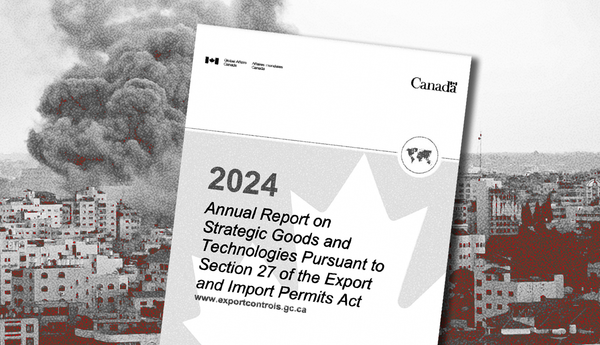No matter where you live in Canada, access to affordable internet and wireless services can be a hassle. This country has some of the highest prices in the world for essential internet and telecom services and, for nearly two million Canadians, reliable internet isn’t even a reality.
As of 2017, only 39 per cent of rural households in Canada had access to the bare minimum standard of internet speed — 50 megabits per second (Mbps) for downloading — set by the Canadian Radio-Telecommunications Commission.
And, with certain jobs and educational resources becoming more remote, this puts each household without steady and affordable internet access at a major disadvantage.
An integral part of the Liberal Party’s plan to provide broadband internet to rural communities is through public-private partnerships.
In 2019, and then in 2020, the Liberal government stated it is on track to provide 98 per cent of Canadians with access to high-speed internet by 2026. By 2030, the prime minister’s office said, all Canadians will be connected. This election, the Conservatives and the NDP promise to provide high-speed internet access to all of Canada by 2025.
Earlier this month, The Liberal government announced a $1.44 billion investment in Canadian satellite company Telesat to fund a satellite internet service that uses low-earth orbit (LEO), geostationary satellites. The plan is aimed at providing broadband to households in rural and remote areas who don’t currently have access to traditional methods of internet connection.
According to internet accessibility experts, projects like Telesat Lightspeed are a short-term band-aid being sold as a long-term solution.
Ashleigh Weeden, a rural futurist and research associate with the Canadian Centre for Policy Alternatives, says Lightspeed is not the solution to Canada’s connection goals, and that the problems start with the CRTC’s current minimum internet speed requirements.
“We’ve got these unambitious goals and targets,” said Weeden of the 50 Mbps download/10 Mbps upload speed. “Most urban centres in Canada, indeed around the world, already have gigabit simultaneous down and upload speed. So, we’re setting a target speed that even now is out of date. By the time we reach that target date (2030), it’s going to feel the way dial-up feels now.”
On top of the unambitious goals, Weeden said the plan to reach them is lackluster, and that she feels “deeply, deeply skeptical” of private-public partnerships like Telesat Lightspeed. “I fundamentally don’t think that public money should be used to create private profit centres,” said Weeden.
In contrast to this method of providing internet access, Weeden envisions nationalizing internet infrastructure — similar to how governments develop roadway projects — where telecom towers and fiber optic, the gold standard for internet connectivity, are installed by the government. Then, internet providers pay for access to that infrastructure to provide customers with service.
“So then we have control over those assets; we know they’re governed by the public good and public stewardship,” said Weeden.
Weeden is also quick to point out the issues with satellite internet — notably, its short-term usefulness of only a few years. Compare that with fiber optic, which can be known to last about 70 years with component upgrades.
“I think what we have (in Telesat Lightspeed) is a good interim concept, being sold as a long-term concept,” said Weeden.
These concerns are mirrored by Erin Knight, a digital rights campaigner at Open Media. “If the government is trying to make a smart, sustainable investment in broadband infrastructure, I think that satellite is a poor technology to choose to subsidize,” said Knight.
Knight said the biggest issue with satellite internet is its cost and low speed. “If you look online, Starlink (which uses similar LEO satellite technology to Telesat) customers are still reporting that performance is impacted by things like heavy rain and snow, which are really common weather conditions for the most remote communities in Canada who are meant to benefit from the satellite investment,” said Knight.
Knight also noted that internet access alone isn’t the end of the road for fixing Canada’s broadband inequalities. Having the infrastructure in place to connect people is nothing if connecting is prohibitively expensive. And internet and telecommunication costs are kept artificially high because of a lack of competition among providers in many areas, said Knight.
According to Knight, some members of Open Media’s community have said that because their area is served by only one provider, their internet and telecom bills are extremely high. She said one rural household of two people they were in contact with was paying around $400 a month for internet and phone access.
“That is so wild and that kind of story is really common, even for direct-to-consumer LEO alternatives,” said Knight.
These problems are all too familiar to Deputy Mayor of Thames Centre, Ontario, Kelly Elliot. On a bright and sunny day, her satellite internet provides a maximum speed of 5 Mbps download and 2 Mbps upload — nearly 10 times slower than the CRTC’s current internet access goals. To make matters worse, this speed can go down when bad weather sets in.
“If it’s cloudy or storming, I have nothing,” said Elliot.
Up until the pandemic, Elliot was able to live and work around her slow internet speeds. But, when the entire world went online, she had to figure out an alternative.
“For the entire duration of the pandemic, I did our Zoom, at-home meetings from council chambers, because that’s where I could go in and get reliable internet,” said Elliot. And, given the rural nature of her municipality, she had to drive nearly 25 minutes to attend meetings that others could from their homes.
The price she pays for this nearly unusable service? $75 a month. And this is all in a community just 20 minutes outside of London, Ontario.

The extensive vision required to solve the issue of internet accessibility and affordability is not present in current Canadian politics, even with the upcoming snap election. Open Media has gone as far as to say that internet policy in Canada is “totally adrift.”
“We need to really end big telecoms calling the shots at the CRTC and the government, and to put the power back in the hands of the people to guide the policies and regulations that will serve us,” said Knight.
Weeden echoed this point. “There seems to be this reluctance to push back on large telecommunications companies and, certainly, to really take a hard look at the CRTC,” she said.
As well, a recent reversal on a decision by the CRTC that would have made it more affordable for smaller internet service providers to use large telecoms’ infrastructure means that holding monopolies in smaller communities could become even easier for big corporations.
Major overhauls of the current system are missing from the Conservative and Liberal party election platforms, the former of which only proposes “build(ing) digital infrastructure."
Meanwhile, the plan put forth by the NDP to form a crown telecom and internet corporation might seem like the vision Canada needs, but Weeden said this is a waste of time and effort.
“We have a regulatory body we need to fix,” said Weeden. “So why create a whole extra one with no assurance it’ll do what it’s supposed to do?”
For people like Elliot, expensive, private options seem to be the only choice for the time being.
When a new infrastructure announcement by Swift Rural Broadband was made and the newly announced plan was nowhere near her house, Elliot made the decision to pay a deposit for Elon Musk’s Starlink. However, she thinks consistent Starlink internet service might not be a reality for a few years.
“I would say for a lot of Canadians Starlink is the only option,” said Elliot. “It’s a relatively expensive option ... and if we’re pricing people out of accessing the internet, we’re not doing them any favours.”
Tristan Wheeler is a freelance writer based in Toronto. His work has been featured in The Capital Daily, Passage, POV Magazine and more.







